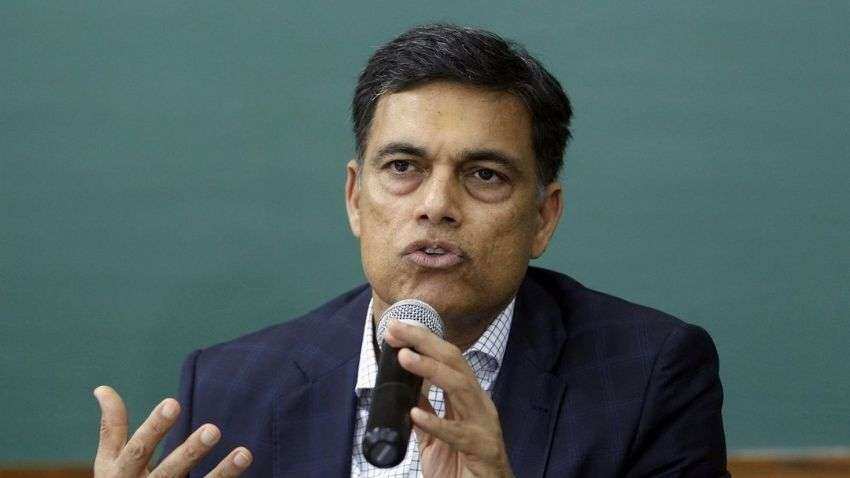Adoption of viable green steel-producing methods a decade away: Sajjan Jindal
Jindal, who is also the Chairman of the World Steel Association, said even as switching to clean hydrogen-based steel making technique is the most likely immediate solution to achieve net-zero targets, the investment required to set up new plants while shutting down the old ones will be a major barrier in this transition.

It may take over a decade to adopt viable methods of green steel production to meet carbon-neutral goals, JSW Group Chairman Sajjan Jindal said on Friday.
Jindal, who is also the Chairman of the World Steel Association, said even as switching to clean hydrogen-based steel making technique is the most likely immediate solution to achieve net-zero targets, the investment required to set up new plants while shutting down the old ones will be a major barrier in this transition.
"Viable green steel production could be more than a decade away even though several of the world's major steelmakers, including us, are actively developing plans to adopt the process to meet carbon-neutral goals. In this context, switching to clean hydrogen seems to be the most likely immediate solution to get to net zero.
"While the prices of renewable electricity and green hydrogen are falling fast, the capital costs of setting up new plants and shuttering old ones, I foresee will be a major barrier to change," he said in a statement.
A sustainable transition will not come about on its own. The industry will have to take some bold steps collectively towards developing sustainable solutions, he added.
At the recently held COP26 Summit, Prime Minister Narendra Modi pledged to achieve a zero-emissions rate by 2070. This was the first time India has set a target on climate action.
"As one of the biggest contributors to greenhouse gases globally, the steel industry has a crucial role to play in achieving this target. While the Steel Industry accounts for 0.7 per cent of the world's economic output, the industry also contributes 7 per cent towards global emissions. This needs to change and needs to change fast," Jindal said.
Curtailing carbon emissions, he said, will require major upgrades at the steel mills, and the initiative will have to be taken at the industry as well as policy level.
The industry will need an entirely new, transformative approach, which includes using carbon capture, utilisation and storage (CCUS) with the existing fossil fuel-based iron making (BF-BOF), substituting hydrogen for carbon as a reductant, and using renewable electrical energy, he added.
With the deployment of the best available technologies, low-carbon steelmaking would become competitive with respect to conventional methods.
While the transition period may involve high initial capital costs and Opex costs, proactive government support through well-designed policy will ensure that the industry is not discouraged from making this transition, the industrialist said.
Get Latest Business News, Stock Market Updates and Videos; Check your tax outgo through Income Tax Calculator and save money through our Personal Finance coverage. Check Business Breaking News Live on Zee Business Twitter and Facebook. Subscribe on YouTube.
RECOMMENDED STORIES

Rs 3,500 Monthly SIP for 35 years vs Rs 35,000 Monthly SIP for 16 Years: Which can give you higher corpus in long term? See calculations

SBI 444-day FD vs PNB 400-day FD: Here's what general and senior citizens will get in maturity on Rs 3.5 lakh and 7 lakh investments in special FDs?

SCSS vs FD: Which guaranteed return scheme will give you more quarterly income on Rs 20,00,000 investment?

Looking for short term investment ideas? Analysts suggest buying these 2 stocks for potential gain; check targets

Power of Compounding: How long it will take to build Rs 5 crore corpus with Rs 5,000, Rs 10,000 and Rs 15,000 monthly investments?
06:44 PM IST









 JSW Infrastructure has huge potential to grow its business: Sajjan Jindal
JSW Infrastructure has huge potential to grow its business: Sajjan Jindal JSW Steel crude steel output grows 8 pc to 14.4 LT in Oct
JSW Steel crude steel output grows 8 pc to 14.4 LT in Oct JSW Steel may raise additional long-term resources via rights
JSW Steel may raise additional long-term resources via rights JSW Energy cancels deal to buy JPVL's 500-Mw Bina plant
JSW Energy cancels deal to buy JPVL's 500-Mw Bina plant JSW keen to snap up stressed assets, to create $1-billion war chest
JSW keen to snap up stressed assets, to create $1-billion war chest